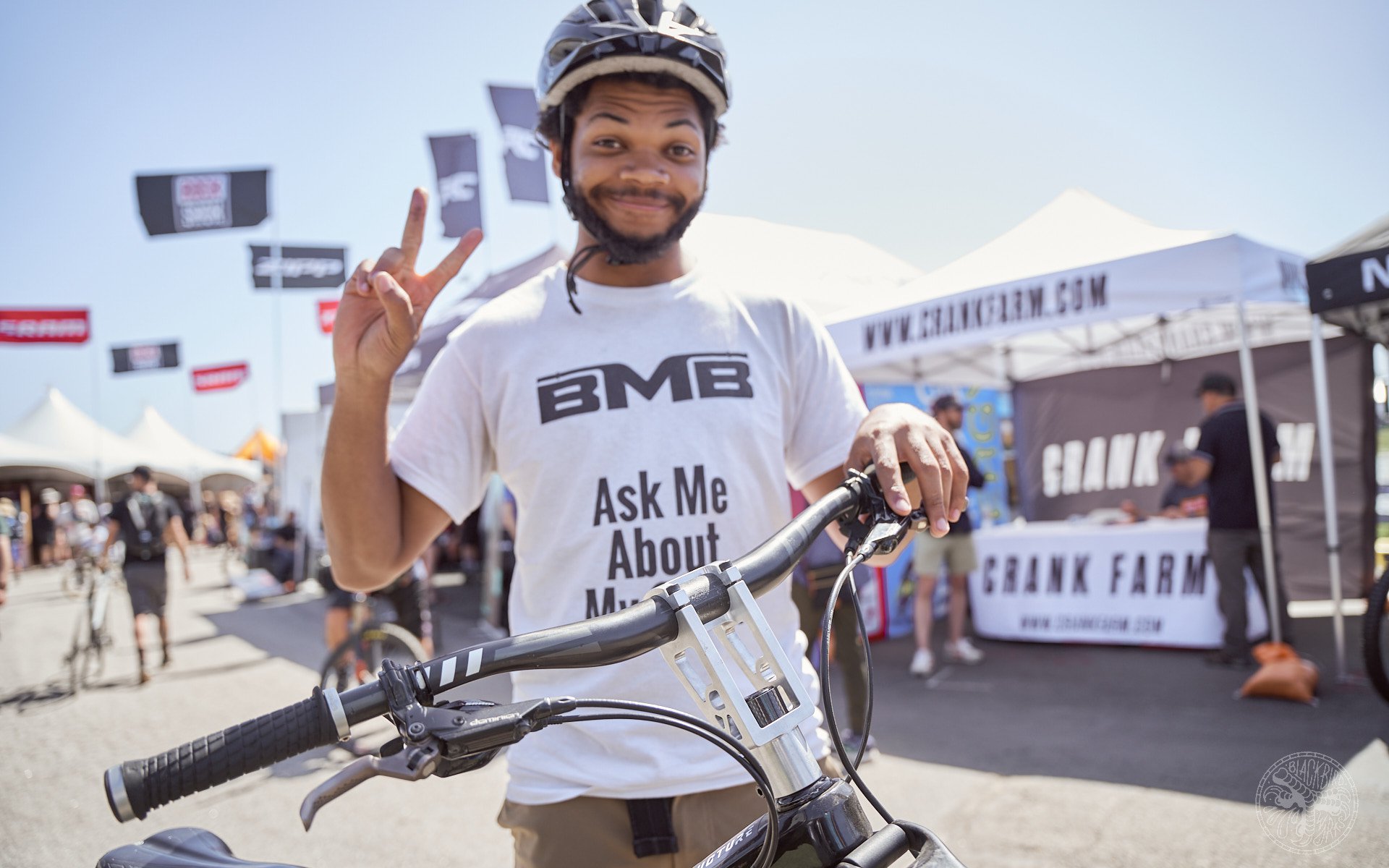
Sea Otter 2022 Coverage
The Most Interesting Dude at Sea Otter 2022
Flying on a plane, crossing an international border? After two years shuttered in the misery(!) of North Vancouver, it was refreshing to get the hell out of town and into some nicer weather. We didn't like our odds for last years October Sea Otter, so we stayed home, which meant this year's Classic was our first since 2019. I didn't realize how much I missed travelling until it happened and we tacked on some extra time to enjoy the experience, spending a day in Santa Cruz (after the Juliana party at the Santa Cruz office) and saw some sights and even some mind-blowing automobiles - but Deniz talked about that.
And of course the best thing about going to an event like Sea Otter is the interesting people you meet and the old friends get to catch up with. The biggest perk about working alongside the bike industry is the passionate people who make, sell, repair, and market the products essential to our riding.
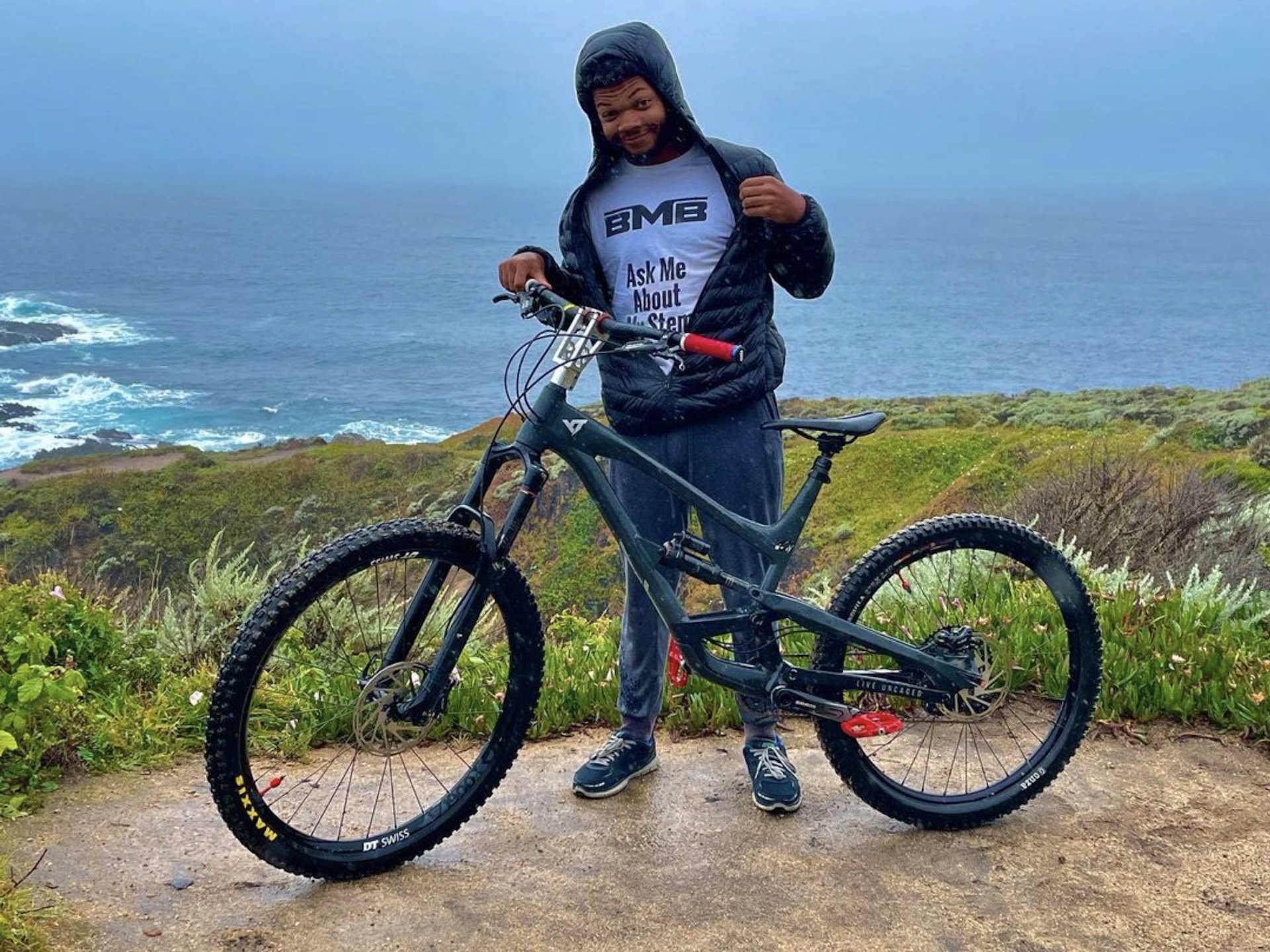
A legend in the making? In his own words: "I’ve been designing mountain bikes and mountain bike components since about 5th or 6th grade. It’s my biggest and longest standing passion now at 23. My Raised Reverse stem revelation has been in explicit development though for almost 2 years with constant researching, testing, and refining until it became what is the future of mountain bikes."
One of the most interesting characters I met at Sea Otter this year was Bronson Moore, a 23 year old who has been designing mountain bike parts since he was in the 5th grade. The gentleman is stoked about bikes and about designing products to make them better. Is he on the right track? Who the hell knows? Ten years ago you would have been laughed out of the paddock at Sea Otter if you'd suggested 29-inch wheels were the future of downhill bikes. Mountain bikes started off as cruisers and then, once frames were being purpose built, they looked a lot like road bikes. Remember 150mm stems and 71º head angles? Too many times I've written off ideas as harebrained only to have them become essential products. I laughed at the first remote telescoping dropper post; the Gravity Dropper. So I gave Bronson the chance to explain his stem in his own words.
Tell me more about your Raised Reverse Stem revelation Bronson.
I had long thought about raising the bars in general for a better angle of the arms to the bars so that you can support yourself when you encounter an obstacle that sends you forward without fear of you going over the bars. Also, I liked how when bikes get slacker, the front wheel moves further away from your hands which decreases your endo angle and makes the bike less likely to flip over forward when you encounter a large obstacle.
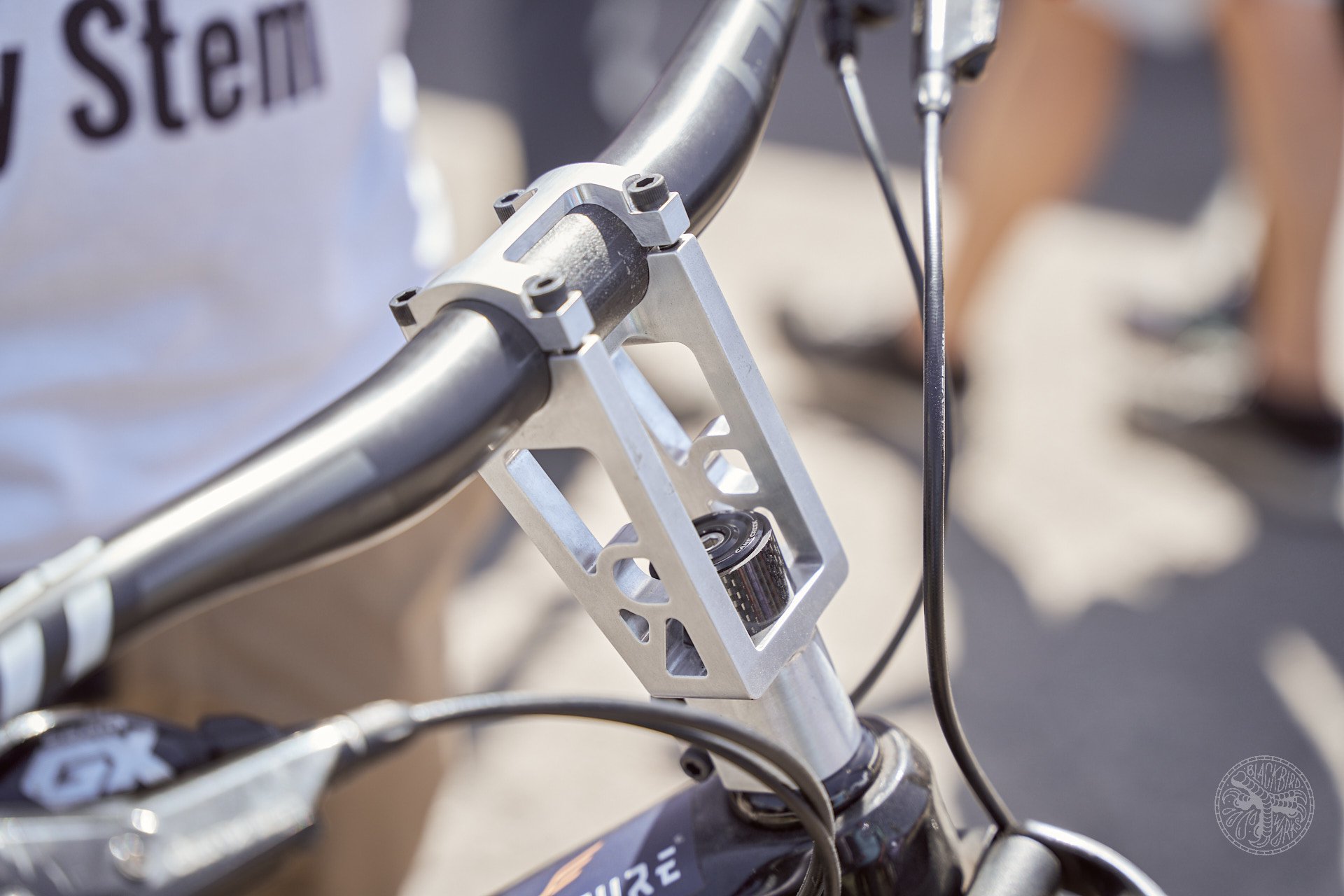
If you notice the two members reaching up to support the bar, you'll notice the forward member is almost vertical while the rear is angled backward. This is what produces the reverse offset. Bronson calls it "the future of mountain bikes" because he believes eventually bikes will be built with taller steerers and head tubes so the stem itself won't have to be as tall.
That sounds logical and plausible. How did this idea morph into the RR Stem?
Both of these together I believed would create a bike that was easier, more comfortable, and safer to ride on steep gnarly terrain. The thing though was that just making the bike slacker seemed to make the steering harder to control with it feeling floppy and wandering at low speeds, along with increased fork dive due to the slacker angle, and increased front center length changes. So I thought about having two separate head tubes, one for the fork, and a second behind it for your stem and handlebars. These would be connected via a belt or chain. This would allow the relationship of head tube angle, fork offset, and distance between hands and front axle to be controlled more independently.
To simulate my idea of the front wheel being significantly further in front of my hands, I reversed my 50 mm stem on my bike. Riding it around in front of my house, I noticed that the front end felt less floppy, I could press in a lot harder on the hands when turning without the steering feeling unstable, I could turn tighter when before the front wheel would try to tuck in, I could ride straighter at low speeds, and I could lean the bike over way more creating really smooth flowing turns. It got me thinking that this could be something really good if tuned, and that I may not need to pursue my double head tube concept.
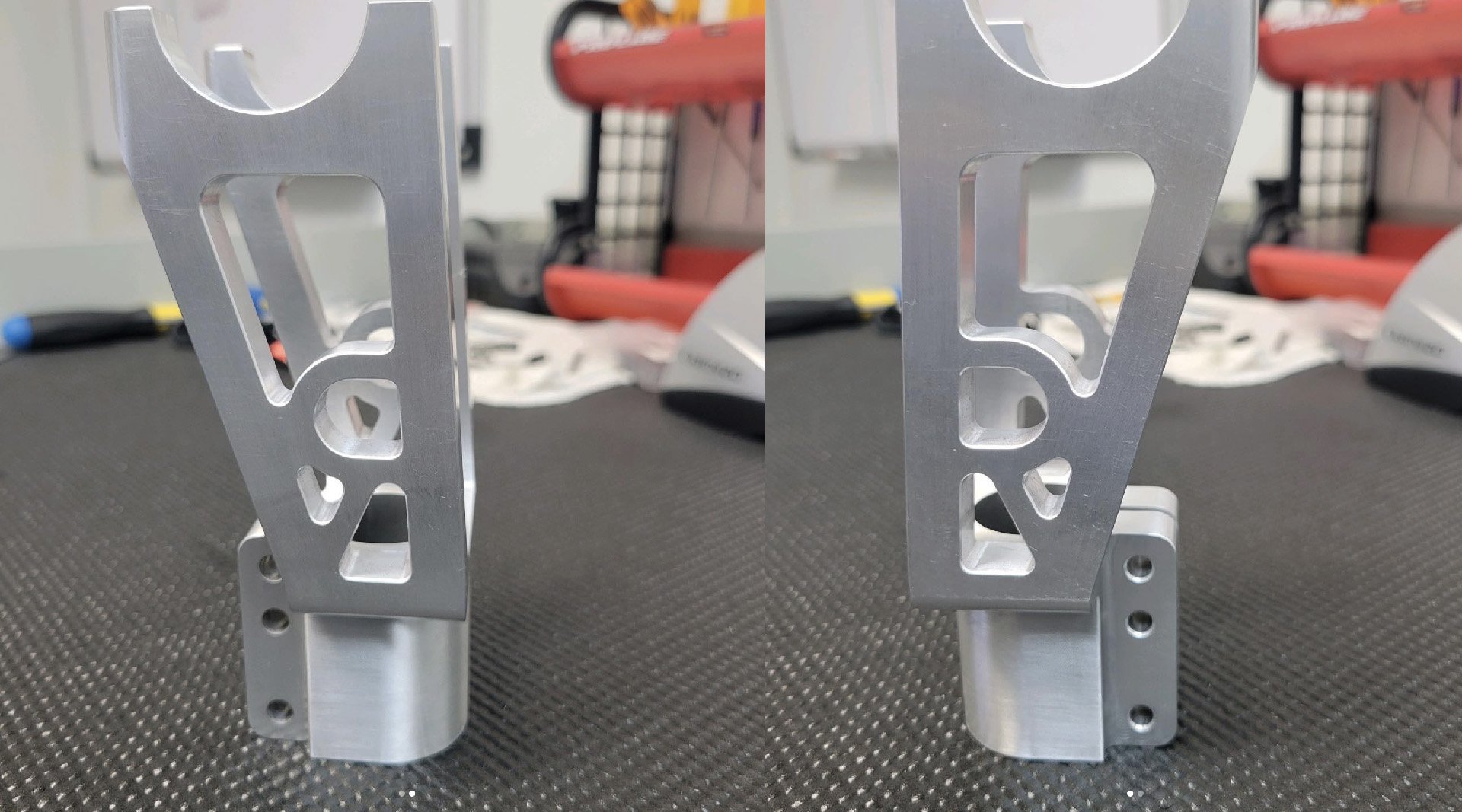
A closer look reveals that the RR stem's forward supports (left) are actually angled slightly to the rear of the bike.
So you kept tinkering with a taller stem that reversed the offset until you got something you liked riding. What would you say are the advantages to the RR Stem?
I would say the biggest advantage is the cornering performance. The reverse offset really calms the steering feel, and practically eliminates the floppy feeling you get from slacker bikes. It also really helps you when leaning the bike over to be able to keep your body towards the outside of the bike to keep your side knobs loaded properly while leaning the bike over further for a kinematically tighter turn. The increased leverage from your hands to your feet helps to load the bike more when pumping around the turn and increases maneuverability. The more rearward position helps you to overload the rear tire so it breaks loose first in a controlled manner while sometimes even pulling the front around to get the bike to snap around a really tight turn. Because of the steering geometry change, you can also turn tighter before the front wheel wants to tuck in and jackknife unexpectedly.
One thing is pretty certain, Bronson's unusual stem doesn't seem to be slowing him down.
I asked Bronson what sort of impression riders generally have after having a go on the RR and he said that most get used to it quite easily and find it more comfortable and that the steering feels nice. I realize this is a little like asking Ronald McDonald how people enjoy their first Big Mac, but Bronson was my only info source. Another comment he has heard is that the bike is easier to manual (I like this!) and one rider said he could more easily get the rear wheel loose and "snap around a turn."
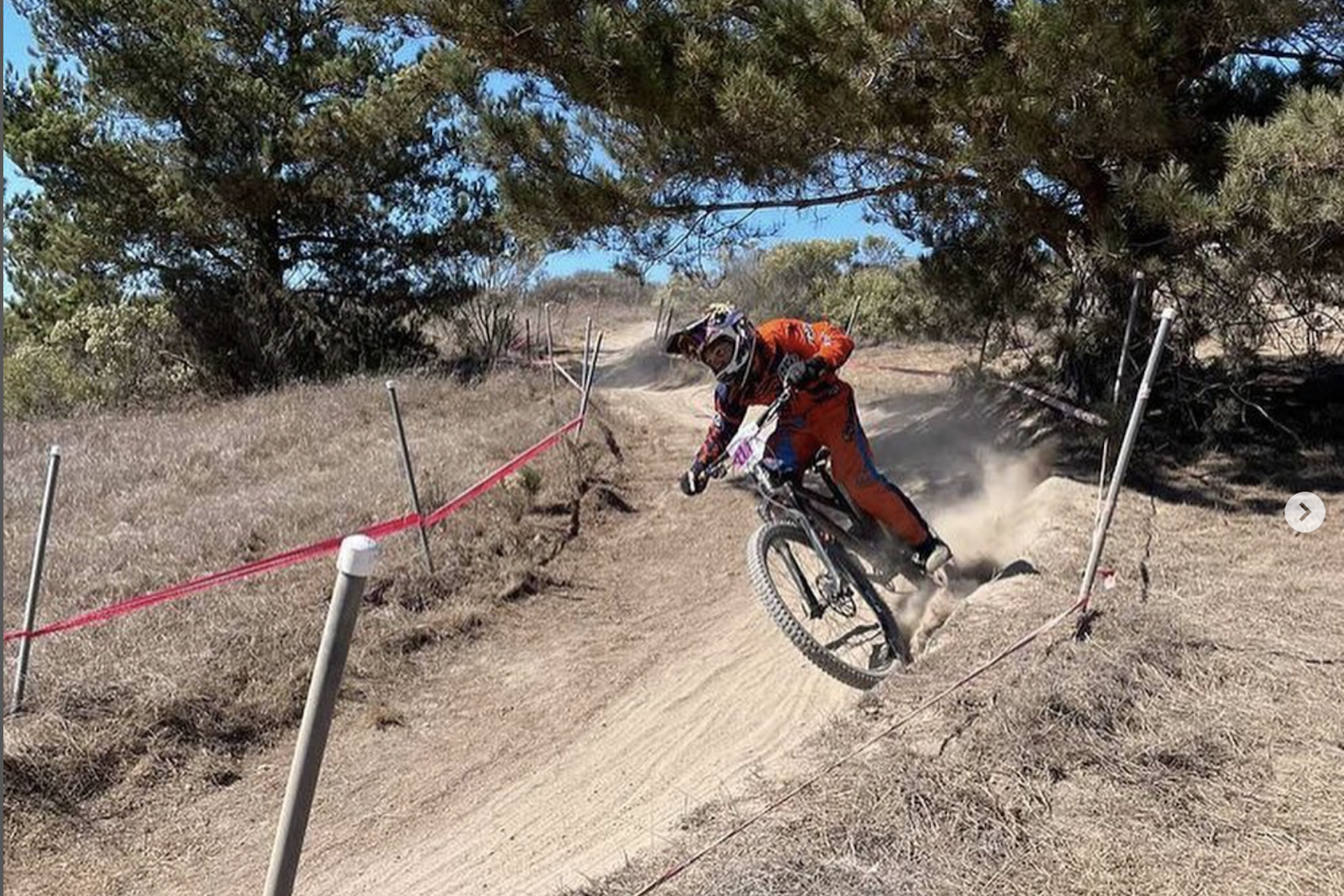
Bronson racing at Sea Otter in 2021 on one of his prototype RR stems. Photo - @thegirlonwheels
Bronson had a pretty good Sea Otter all in all. He went to check out the bikes from Structure Cycle Works in person. Clearly out of-the-box thinkers recognize their tribe easily and when he went to say hello, Loni from Structure asked if Bronson wanted to put a stem on one of his bikes and race it in the dual slalom and DH, so he did! I have no idea when or if this concept will start influencing the bikes we ride but I'm very glad there are intelligent and creative people like Bronson in our industry to keep things interesting as we move forward, and lower, and slacker, and longer...
Motorcycles and ATVs have much higher bars than mountain bikes and you could argue that BMX bikes do as well. Is this idea too wacky? Maybe, but some of the best ideas in mountain biking have come from mad scientists.
Long live unconventional thinkers, rogues, and renegades; they, like Bronson Moore, are a perfect fit for our off-kilter sport.
You can find him on instagram: @bemorebikes

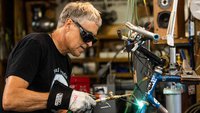
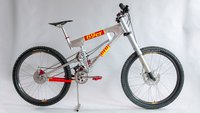
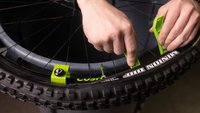
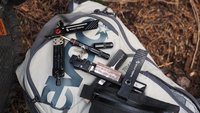

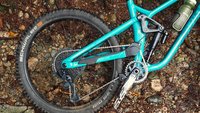
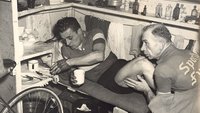
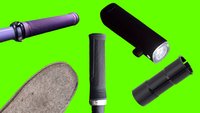

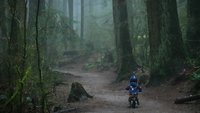
Comments
Cr4w
1 year, 9 months ago
I miss the times when mountain bike design had more guys like this. I have no idea if his idea works but I love that he's going at it alone. The first steep seat tube slack head tube bikes looked pretty weird when they came out too, or Fisher Genesis bikes before those.
It's great that we have somewhat entered a new era of mad scientist development. Which, if we care to remember, is the mindset that produced all the designs that became the cookie cutter bikes that most of us ride now.
Reply
otagoboy
1 year, 9 months ago
I recently swapped out my normal 35mm riser 16 degree backsweep bars for a “ridiculously” high 75mm riser 16 degree back sweep Whisky Parts Milhouse bar on my ZERODE Katipo. The extra height was excellent on the steep stuff and made flat trails much less tiring too. Would love to try his Raised Reverse Stem and take things a big step further.
Reply
fartymarty
1 year, 9 months ago
I'm on 70mm rise* Ergotecs with 12 backsweep and 20mm stem spacers on my 140mm (f+r) Murmur and can't see any downsides.
* initially prompted by Mr Major and his high rise Answer Pro Taper review. The 70mm bars were originally on my 120mm HT but I've moved them to the Murmur.
I set the centre of grips on the centre of the steering axis (copied from Paul Astons G1) but may roll back a bit more.
Reply
Vik Banerjee
1 year, 9 months ago
Yes I am not sure what would be different if he designed a bar that achieved that same geo vs. his tall stem and a low rise bar. I think most MTBers would embrace a high rise bar more easily than that stem in terms of aesthetics.
Regardless kudos to him for having an idea and doing something concrete about it.
Reply
andyf
1 year, 9 months ago
That will get you the same height but it won't put your hands in the same fore-aft position. His solution puts the hands behind the steering axis. I don't know if this is a good or bad thing, just noting the difference.
Reply
Mammal
1 year, 9 months ago
If the bar has a bigger back sweep it could achieve a similar position (what otagoboy was saying).
This is kind of a continuation of a topic on the Meat Engines forum, where people were comparing their hand position to their steering axis. I was surprised there are quite a few people effectively steering from behind the steer tube.
Reply
fartymarty
1 year, 9 months ago
IIRC Fabien Barel tried -ve stems and didn't like it. I think Paul Aston mentioned it in his G1 article. For me centre of grips on centre of steerer feels good - like all your weight is being pushed through the front wheel contact patch.
It surprises me that no one talks about "grip centre" v steerer centre as a measurement as it has a big impact on how your bike handles.
BeMoreBikes
1 year, 8 months ago
The RR stems geometry raises the riders hands and puts them behind the steering axis with its reversed offset. This position could be achieved with a typical bar with enough rise that is angled back further than typically, but then the upsweep and back sweep dimensions would be compromised from what the rider would typically run. A bar could be designed to have typical up sweep and back sweep at that angle, but then you wouldn’t be able to adjust your upsweep and back sweep with bar role without significantly changing the height and offset of your hands relative to the steering axis.
With the RR stem, you can run a typical rise bar, and still fine tune upsweep and back sweep with bar role without significantly changing the height or offset of your hands relative to the steering axis.
A bar with an extreme rise is also a longer lever from your hands to the stems bar clamp. This puts more force into trying to torque your bars forward or back, and may require increased bar clamp tightness.
Reply
NotMeAtAll
1 year, 9 months ago
Big ass riser bars are doing this work for me. I also like a lot the aestethic of bigger bars.
I'm currently on a motorcycle bar, with 10cm of rise and 31,75mm of bar diameter on the center of the bar. They have extra mass, are made thicker, so they do not offer the dampening effect lighter ones have. Doesn't matter, those ergonomic grips also help aleviate and distribute pressure, while giving some feedback on the bike's angle in relation to you.
Reply
mrbrett
1 year, 9 months ago
I'd try it. Every time I get taller bars, I want more.
Reply
Cr4w
1 year, 9 months ago
Well you're just wrong. Everyone at every height wants short head tubes and minimal rise risers because that's what Sam Hill did once so it's right for everyone.
Reply
Dogl0rd
1 year, 9 months ago
I met this guy in LA at my local pump track and at one of our more gnarly jump trails. He is so passionate. I would love to see some really sick rider try his stem.
I feel like the idea is so out there that most people just look at him like he's a kook and dismiss it, but when he explained why his stem worked it seemed to make sense.
I rode it around the parking lot and not on a trail so I couldn't make any conclusions. Hope someone takes a big chance on him.
Pinkbike should have Barelli ride it or something...
Really glad you guys have him a highlight.
Reply
Cr4w
1 year, 9 months ago
Kooks are what got us here. Every cool thing we have started as a kook trying to get someone to listen to his crazy idea.
Reply
Cam McRae
1 year, 9 months ago
I think you're picking up what I was putting down. borat-high-five!
Reply
Agleck7
1 year, 9 months ago
Thanks for covering this! Saw the stem in some otter vids and was very curious.
Reply
ebsocalmtb
1 year, 9 months ago
Cool dude, cool article... but I'm a little bummed that he's not on a Bronson. Cmon Santacruz, get this guy a mk4 Bronson so this dude can ride his namesake!
Reply
BadNudes
1 year, 9 months ago
Thanks for sharing Bronson's story! Cool to see someone so young experimenting and actually making stuff. I think he's on to something here.
I'm riding on moto style bars from WZRD and Surly with around 85mm rise and 16 to 20* sweep. Seems wacky when you first get on, especially coming from something 'normal', but after riding for 15 min I start wondering how many more spacers I could get under the stem. I still haven't found the limit of 'too high' for me, but maybe Sam Pilgrim has?
Reply
dirtsled
1 year, 9 months ago
Cool article, our "Dutch" citybikes have high bars with an effective reverse stem, the touch-point of the handlebar sits behind the pivot point / headtube. It works as advertised, relaxed and steady steering, lean the bike over to make a turn. Just dont push the bike hard into a corner or pay with a lowsider...
I believe that Analog cycles also has a near zero highrise stem.
Grtz
Reply
Cr4w
1 year, 9 months ago
Have you ever watched someone on one of those dutch city bikes try to make it up any kind of incline? It's comical.
Reply
Timer
1 year, 8 months ago
Fascinating guy. Didn't Mondraker already do the vertical stem ten years ago? Maybe not to such an extreme degree.
https://www.bikeradar.com/news/exclusive-mondraker-unveil-radical-new-centre-stem/
Reply
Perry Schebel
1 year, 9 months ago
how can you generate *any* front grip with that setup?
Reply
mrbrett
1 year, 9 months ago
I agree with you on flat terrain, but once you're pointed down there's plenty of weight on the front wheel anyway.
Reply
Dave Smith
1 year, 9 months ago
I was wondering the same thing given the steeper nature of the local jank.
Reply
BeMoreBikes
1 year, 8 months ago
Grip on the front is not an issue. I used to ride very heavily over the front putting lots of weight through my hands. I did this because at the time I thought that I needed to load the front more for cornering traction. That’s actually one of the reasons I started to like this setup when I was in the early stages of developing this concept. The reverse offset of the RR stem really calms the steering feel, so I could load the bars harder when turning without any unwanted torques or floppiness. What I learned though through testing was that getting more forward, and loading the hands more was not necessary, and often even counter productive.
The reason your front wheel pushes and washes out in a turn is often not about needing to put more weight on it, it’s more about loosing the balance of keeping the lean angle of your center of gravity driving into your tires contact patch. When the front understeers, you effectively widen your turn. To correct for this you need to turn your front wheel more and get the lean angle of your center of gravity to move up to increase the centrifugal forces effect before gravity pulls you down. If your weight is falling towards the inside of the bike as you turn more, as it does with a traditional stem, it will be very hard to counter balance and bring your weight up enough to bring the bike back up under you.
Having too much weight on the front can actually make the bike more likely to continue pushing straight instead of changing direction. This is particularly true in loose conditions. An object in motion wants to stay in motion in a straight line the same direction it is currently going. The more weight an object has, the more it will resist a change in direction. With this in mind, putting more weight on the front wheel can increase down force on the tire for traction, but crucially also increases how resistant it is to changing direction. Moving your weight further back with the bike leaned over further under you frees the front wheel to change direction easier and quicker.
Think about the front wheel lifting up. Now think about the front wheel lifting like that but with the bike leaned over. The bike is now basically turning. This is why you will sometimes see a rider rail a tight berm and come out in a brief manual. They are pumping the turn starting centered or maybe even a bit forward, and then driving back leveraging the bike around the turn under them until they can pull back on the bars and whip the bike around the turn.
With a rearward weight bias, and a reversed offset stem, the lighter tracking front end has the benefit of continuing to turn even when it starts to slide. When the bike understeers, you are able keep your balance from falling in and forward better when turning the front wheel more so that it’s slip angle continues in the direction you want to go. You can even pull the front wheel around to keep it turning instead of pushing.
The rearward weight bias helps to overload the rear, helping it to break loose first in a controlled slide, and helping the bike to oversteer. This is why you will see more riders burping rear tires than front tires when demolishing really fast tight corners. The rear is seeing a higher load. This is also part of why you want higher rear tire pressures.
The reason people think you need to get more forward is a side effect of traditional and modern geo. With a long and low cockpit with a forward stem, you can’t get that far back before you run out of arm bend to easily get the bike leaned over more than your body. You should mainly drive your weight through your feet for loading the bike through a turn, and use the bars to leverage the bike around underneath you while keeping steering control.
Reply
blackhat
1 year, 8 months ago
Interesting observations. So basically you think optimal cornering technique is to sort of balance over the rear wheel and let it do the bulk of the directional change work and use snappy steering at the front to keep everything lined up and balanced? Not trying to put words in your mouth or anything, just paraphrase so I understand better.
That’s a pretty radical departure from the traditional paradigm, but of course paradigms turn out to be wrong all the time.
Reply
kcy4130
1 year, 9 months ago
"Most interesting dude at sea otter" ...Based on photos I'm guessing there was quite a lot of competition for that title.
Reply
ShawMac
1 year, 9 months ago
Reminds me of the big bar risers on sleds. I have not tried taller bars on my bike. It's an expensive venture to experiment with. My Banshee Prime seems to have a pretty tall stack height as it is. Perhaps my downhill bike will get the first taste of riser.
Reply
Cam McRae
1 year, 9 months ago
Sleds are the best comparison I'd say. Good call.
Reply
Michael Chancellor
1 year, 8 months ago
This comment has been removed.
BeMoreBikes
1 year, 8 months ago
I’m 5’8” and I have found about 460mm of frame reach is a good size for me with an RR stem.
I’d say the RR stem scales well with current mtb geometry for a wide range of rider heights. Shorter riders have a bike with a rear end that is relatively long, so they need an even higher relative front end height for more leverage to maneuver the bike. Tall riders have a bike with a relatively short rear end, so they don’t need as much leverage, but they do need a better rider position. Combine this with the ability to fine tune height via running spacers above or below the steerer tube mount, and riders using bar rise to match their height, and you should be able to find a height that works for you and your bike perfectly.
As far as needing to stretch to a super long wheelbase, you should be able to stay on the frame size you are on if you feel it fits you well. The raised height of the RR stem pairs perfectly with the closer hand position from the reversed offset so that you don’t need to upsize your bike. Typically to have a good arm angle and bend in good form, you’re hinged forward at the hips such that your back is fairly horizontal. With the more upright position, you don’t need to account for as much horizontal torso length in the cockpit. At 5’8” and I’ve tested it on bikes with reaches from 438mm to 500mm, and I am always faster and in more control with an RR stem.
I appreciate the support, this is just the first of many things I have designs for. 🙂 Follow BeMoreBikes on Instagram at
BeMoreBikes Insta
for updates.
Reply
Derek Baker
1 year, 8 months ago
Fascinating and following Bronson!
Reply
blackhat
1 year, 8 months ago
Didn’t get to sample the competition for the title, but he is indeed an interesting dude.
But I was well into the process of figuring out how to make a copy on a mill using my limited machining skills when I rewatched the video of him cornering on that berm. As one might suspect based on the conventional wisdom, the steering looks… umm… well as Bronson said, it is indeed maneuverable. So maneuverable that it traces an 8 inch sine wave pattern from beginning to end. Not my idea of a steering improvement.
I could see it being a useful concept to adjust rise with a smaller offset or get stem offsets less than 30 mm. But the zero to negative offset seems like a bust. Wonderful effort though, and I would still love to ride it.
Reply
MTB_THETOWN
1 year, 8 months ago
Love the idea and the story, but looks like it's designed for a T-Rex
Reply
Please log in to leave a comment.